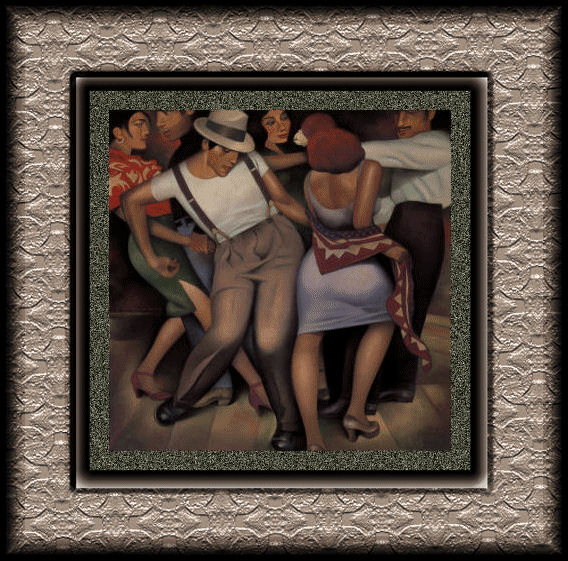
Monday, December 26, 2011
Wednesday, December 21, 2011
Monday, December 19, 2011
Wednesday, December 14, 2011
Solar power roadways?
Wednesday, December 7, 2011
Harry Morgan (April 10, 1915 – December 7, 2011)
Harry Morgan (born Harry Bratsberg, sometimes written as Harry Bratsburg) was an American actor. He was widely known for his roles as Pete Porter in both December Bride (1954–1959) and Pete and Gladys (1960–1962), Detective Bill Gannon on Dragnet (1967–1970), Amos Coogan on Hec Ramsey (1972–1974), and Colonel Sherman T. Potter in M*A*S*H (1975–1983). Additionally, Morgan appeared in more than 100 films.
Early life and career
Morgan was born in Detroit, Michigan, the son of Anna (sometimes written as Hannah) and Henry, who were of Swedish and Norwegian heritage. He was raised in Muskegon, Michigan, and graduated from Muskegon High School in 1933 where he achieved distinction as a statewide debating champion. He originally aspired to a law degree, but began acting while a junior at the University of Chicago in 1935.
Morgan joined The Group Theatre in New York City in 1937, and appeared in the original production of the Clifford Odets play Golden Boy, followed by a host of successful Broadway roles alongside such other Group members as Lee J. Cobb, Elia Kazan, Sanford Meisner, and Karl Malden.
Morgan did summer stock at the Pine Brook Country Club located in the countryside of Nichols, Connecticut with The Group Theatre which was formed by Harold Clurman, Cheryl Crawford and Lee Strasberg in the 1930s and early 1940s.
Film work
Morgan made his screen debut (originally using the name "Henry Morgan") in the 1942 movie To the Shores of Tripoli. His screen name later would become "Henry 'Harry' Morgan" and eventually Harry Morgan to avoid confusion with the popular humorist of the same name.
In the same year, Morgan appeared in the movie Orchestra Wives as a young man pushing his way to the front of a ballroom crowd with his date to hear Glenn Miller's band play. A few years later, still credited as Henry Morgan, he was cast in the role of pianist Chummy MacGregor in the 1954 biopic The Glenn Miller Story.
Morgan continued to play a number of significant roles on the big screen.
1950s TV roles
Morgan hosted the NBC radio series Mystery in the Air starring Peter Lorre in 1947. On CBS, he played Pete Porter in Pete and Gladys (1960–1962) with Cara Williams as wife Gladys. Pete and Gladys was a spinoff of December Bride (1954–1959).
1960s: Dragnet and other roles
In the 1964–1965 season, Morgan co-starred as Seldom Jackson in the 26-week NBC comedy/drama Kentucky Jones, starring Dennis Weaver.
Morgan was more widely recognized as Officer Bill Gannon, Joe Friday's partner in the revived version of Dragnet (1967–1970).
Morgan had also appeared with Dragnet star Jack Webb in two film noir movies, Dark City (1950) and Appointment with Danger (1951), and was an early regular member of Jack Webb's stock company of actors on the original Dragnet radio show. Morgan later worked on two other shows for Webb, 1971's The D.A. and the 1972–1974 western Hec Ramsey. He also appeared in at least one episode of Gunsmoke.
M*A*S*H (1975–1983)
Morgan's first appearance on M*A*S*H was in the show's third season (1974–1975), when he played spaced-out Major General Bartford Hamilton Steele ("That's three e's, not all in a row!") in "The General Flipped at Dawn", which originally aired on September 10, 1974. Steele is convinced that the 4077th needs to move closer to the front line, to be near the action. Morgan's memorable Emmy-nominated performance impressed the producers of the show.
The following season, Morgan joined the cast of M*A*S*H as Colonel Sherman T. Potter. Morgan replaced McLean Stevenson, who had left the show at the end of the previous season. Col. Potter is a career army officer who is tough, yet good-humored and caring -- a father figure to the people under his command.
In 1980, Morgan won an Emmy award for his performance on M*A*S*H. After the end of the series, Morgan reprised the Potter role in a short-lived spinoff series, After MASH.
Later years
In 1986, he costarred with Hal Linden in Blacke's Magic, a show about a magician who doubled as a detective solving unusual crimes. The series lasted only one season.
In 1987, Morgan played Mr. DePinna on a TV version of Kaufman and Hart's Pulitzer prize-winning play You Can't Take It With You. He also played the lead role of Martin Vanderhodff in a short lived series based on the same play.
In 1987, Morgan reprised his Bill Gannon character, now a captain, for a supporting role in another film version of Dragnet; a parody of the original series written by and starring Dan Aykroyd and co-starring Tom Hanks and Christopher Plummer.
In the 1990s, Morgan played the role of Judge Stoddard Bell in a series of TV
movies with Walter Mathau in The Incident; Against Her Will: An Incident in Baltimore, and Incident in a Small Town. He was on an episode of The Simpsons as Officer Bill Gannon from Dragnet in the 7th season ("Mother Simpson") and had a recurring role on 3rd Rock from the Sun as Professor Suter. Morgan directed episodes for several TV series, including two episodes of The Alfred Hitchcock Hour and eight episodes of M*A*S*H. Morgan had a guest role on The Jeff Foxworthy Show as Raymond and a guest role on Grace Under Fire as Jean's pot-smoking boyfriend.
In 2006, Morgan was inducted into the Hall of Great Western Performers at the National Cowboy & Western Heritage Museum.
Personal life and death
Morgan was married twice, had two siblings Margeurite and Arnold (both deceased), and four sons with his first wife: Christopher, Charles, Paul, and Daniel (who died in 1989).
He married Barbara Bushman Quine (granddaughter of silent film star Francis X. Bushman) from December 17, 1986 until his death. He died on December 7, 2011 at the age of 96 due to pneumonia.
Friday, December 2, 2011

The songs -- often played on festive occasions by groups of guitar, violin and trumpet performers wearing traditional clothes or wide-brimmed hats -- are sung throughout Mexico, and have become a key part of regional identity, officials said.
"The community and the family hand down musically their knowledge, history and the pleasure of singing to the nature surrounding them. They consider it their own," Mexican officials said in their application to the United Nations Organization for Education, Science and Culture (UNESCO), which added mariachi music to the organization's list of intangible cultural patrimony Sunday.
Putting mariachi on the list could increase awareness of the music, UNESCO said in a statement Sunday.
"Learning by ear is the main means of transmission of traditional Mariachi, and the skill is usually passed down from fathers to sons and through performance at festive, religious and civil events," the statement said.
Mexico's application notes that the music "has crossed borders and become a symbol of Mexico."
"Immigrants, descendants of Mexicans living abroad, as well as Latin Americans, have made the modern mariachi a symbol of community identity, because it is a bond linking them to their roots in spite of the distance," the application says.
Jorge Aquino, director of the Mexican Music School in Mexico City, told CNNMexico.com last year that the music has evolved over time, and also drawn greater international attention.
"Now including in foreign countries like the United States, Japan and Colombia, there are mariachi schools, mariachi classes, mariachi degrees," he said.
Many of Mexico's monuments have already been honored by the United Nations' cultural organization.
Last year UNESCO added traditional Mexican food to its intangible cultural patrimony list. In 2008, the organization recognized Mexico's traditional Day of the Dead celebration.
This year UNESCO also added 13 other items to its list, including Chinese shadow puppetry, a ritual of transplanting rice in Hiroshima, Japan, and "poetic dueling" in Cyprus.
Sunday, November 27, 2011
SUNDAY IS FOR POETRY: Thank you to Earth

by Joanne Shenandoah/Lawrence Laughing
we say thank you to the earth
For everything that she gives to us;
nourishing us every day.
We give thanks to all the water in the world;
everything within that water.
We give thanks to all the grass that lives on the land.
We give thanks to all the berries, the fruits, the medicines.
We give thanks to the animals that keep the forests clean.
We give thanks to all the trees for their different uses
that they give to us,
For shelters, for fires that we make
In the winter time keeping us warm.
We give thanks to the birds who sing their beautiful songs.
We give thanks to the four winds.
We give thanks to the grandfathers;
The ones that bring the rain.
We give thanks to our oldest brother, the sun,
Who shines his light everyday.
For she is the one that has been charged with the duty
To make sure that light has a continuance.
She is the one that watches over all the movements
Of the water and also the water within us.
We give thanks to the stars, her helper.
And we give a special thanksgiving to the four
sacred beings that watch over the human family.
Sometimes we notice them when we are traveling
in dangerous places.
They are the ones that come to our minds
To protect us and steer us away from danger.
So that's what we do.
We start right from the earth
and we climb the ladder right to the special place
beyond the heavens.
Where there's a special spirit that lives there.
The spirit that made it possible for us to be here
And everything that we have mentioned.
And so with the collectiveness of our minds and hearts,
We send a special thanksgiving and greeting
To the great spirit of us all.
~~~
A Pocket Full of Miracles
http://whoseroleisitanyway.blogspot.com/
Wednesday, November 23, 2011
Monday, November 21, 2011
Meet a 13-year-old solar panel developer by John D. Sutter, CNN
Please pause playlist at bottom of page to hear/watch video.
Obvious statement: Lots of middle schoolers have been outside.
But I'm going to go out on a limb and say that almost none of them look up at the trees, see the Fibonacci Sequence in the branches, and use that insight to develop new and more-efficient methods of arranging solar panels.
Stuff like that only happens to Aidan Dwyer.
This 13-year-old from Long Island, New York, was a presenter at the recent PopTech conference, where he spoke with CNN. He says his method for arranging solar panels - based on the mathematics of tree branches - is 20 to 50% more efficient than traditional solar arrays, especially in low-light conditions, such as cloudy days in the winter or in places where there are lots of trees and tall buildings.
"My design is like a tree," he said, "but instead of having leaves it has solar panels at the ends (of the branches)."
Dwyer created a prototype of this tree-like solar panel array for a science fair with the help of his granddad. He ordered the solar panels online and the pair built the rest of it together. For his efforts, he won the Young Naturalist award this year from the American Museum of Natural History in New York. (You can see a photo of the solar-panel prototype on that museum's website).
This idea for this energy-saving project hit Dwyer when he was going for a walk in the woods near his home in New York:
One day I was just walking through the woods - well, on a winter hiking trip - and I noticed that the tree branches collect sunlight by going up into the air. And I thought: 'Maybe if we put solar panels on the ends of the branches it would collect a lot of sunlight.'
He also made another mind-boggling observation: That tree branches spiral up the trunk based on a mathematic concept called the Fibonacci Sequence. I had to look that equation up before my interview with Dwyer, but I didn't really need to. He can explain it off the top of his head:
The Fibonacci Sequence was made by a medieval mathematician, Fibonacci, and he played with a math puzzle to figure out how fast rabbits could reproduce over time. How it's done is you start with 0 and 1, and then you add the two numbers in the series together to get the next number in the sequence. So it's like 1, 1, 2, 3, 5,
8, 13, 21, 34, and so on.
He added:
The fraction for an oak tree is 2:5, which means five branches spiral around the trunk two times to reach the same starting point. So, if you start out at 75 degrees, and you get five branches to go around the trunk twice, then you'll be back at 75 degrees.
Right-o, kid.
Dwyer said he's been contacted by professors and other middle schools who want to work with him on this project, but not all scientists are impressed with his work. Some science bloggers have tried to debunk some of Dwyer's concept, saying, among other things:
Aidan did not actually discover a more efficient way to convert solar energy into power as he claimed and these numerous publications reported. In fact, Aidan’s essay, while extremely well written, contains methodological flaws and incorrect conclusions.
That blog post, on a site called The Optimiskeptic, questions whether Dwyer used the right measurements to make his conclusions:
I’m not entirely sure why Aidan thought that he could measure power intake by measuring voltage on his solar cells. I’m not entirely sure why the different arrangements yielded different voltage totals ... I do know that solar cells are designed to convert energy from photons into potential energy in the form of electrons: 'charging the battery.' Levels of voltage have nothing to do with how charged that battery is, however, and at no time during his experiment was Aidan actually measuring how much power was being converted by each of the solar cell arrangements.
Dwyer, for his part, says the bloggers are missing the point:
Some of the commenters were encouraging me and some were giving me ideas to expand my research. But some, I felt like they didn't understand my project. Their points weren't really related to my project. I was trying to see if the tree design could collect more sunlight - not more open current voltage. But I also measured open-current voltage and it collected 20% more (than flat-panel solar arrays).
Furthermore, he said, his panels collected 50% more light in low-light conditions than flat-panel arrangements, like those found on top of homes.
So there. Of course, science is a conversation. Debate is a good thing. Who knows whether Dwyer's tree-based solar panels really will change the world - but how cool is it that a 13-year-old has come up with an idea that even has the potential to bump the clean-tech industry a bit into the future?
Dwyer is among the people most shocked by all the attention his project has gotten. He's not sure what to make of it all - or how to handle conversations with adults for that matter:
At PopTech I feel a little lonely because I'm the youngest one there - like, by a big range. It's pretty lonely being the youngest one ... I don't know how to start a conversation with an adult yet - so I just have to wait for them to ask me questions, and all that. They just come up to me and go 'You're that kid!' And then they ask me about my project and they ask me about how I found that idea and then the conversation forms.
One thing I found particularly impressive about Dwyer is that he come across as smart, composed - and normal. The phrase "child genius" brings to mind the social-awkwardness of the kids in "The Royal Tenenbaums" or overly-adult-seemingness of that child actor in "The Sixth Sense." Dwyer doesn't emit those qualities. He seems like pretty much any other middle schooler you might meet - until you ask him about Fibonacci.
"I'm starting to get into photography. I do a sailing program in the summer. I play golf - and I, like, hang out with my friends," he said.
Those friends, by the way, don't quite get all this solar-panel business.
"They're really impressed - but they don't really understand it," he said, cracking a nervous smile. "I don't really talk to them about it."
He saves those conversations for reporters - and for his conference lectures, of course.
Young Aiden Dwyer is a true inspiration to our and his generations!
Saturday, November 12, 2011
Tuesday, November 8, 2011
Joe Frasier (January 12, 1944-November 7, 2011)

Joseph William "Joe" Frazier, also known as Smokin' Joe, was a former Olympic and Undisputed World Heavyweight boxing champion, whose professional career lasted from 1965 to 1976 with a brief comeback in 1981.
Frazier emerged as the top contender in the late 1960s, defeating the likes of Jerry Quarry, Oscar Bonavena, Buster Mathis, Eddie Machen, Doug Jones, George Chuvalo and Jimmy Ellis en route to becoming undisputed heavyweight champion in 1970, and followed up by defeating Muhammad Ali on points in the highly-anticipated "Fight of the Century" in 1971. Two years later Frazier lost his title when he was knocked out by George Foreman. He fought on, beating Joe Bugner, losing a rematch to Ali, and beating Quarry and Ellis again.
Frazier's last world title challenge came in 1975, but he was beaten by Ali in their brutal rubbermatch. He retired in 1976 following a second loss to Foreman. He made a comeback in 1981, fighting just once, before retiring for good. The International Boxing Research Organization (IBRO) rates Frazier among the ten greatest heavyweights of all time.[2] He is an inductee of both the International Boxing Hall of Fame and the World Boxing Hall of Fame.
Frazier's style was often compared to that of Henry Armstrong and occasionally Rocky Marciano. He was dependent on bobbing, weaving, grunting, snorting as he grimaced with all out aggression wearing down his opponents with relentless pressure. His best known punch was a powerful left hook, which accounted for most of his knockouts. Compared to Ali's style, he was close enough to the ideal bruiser that some in the press and media characterized the bouts as the answer to the classic question: "What happens when a boxer meets with a brawler?"
After retiring, Frazier made cameo appearances in several Hollywood movies, and two episodes of The Simpsons. His son Marvis became a boxer — trained by Frazier himself — although was unable to emulate his father's success. Frazier continued to train fighters in his gym in Philadelphia. His later years saw the continuation of his bitter rivalry with Ali in which the two periodically exchanged insults, interspersed with brief reconciliations.
Frazier was diagnosed with liver cancer in late September 2011 and admitted to hospice care. He died November 7, 2011.
Saturday, November 5, 2011
Andy Rooney (January 14, 1919-November 4, 2011)
Thursday, October 20, 2011
A Halloween treat...Walt Disney's 1929 "The Skeleton Dance!"
Monday, October 17, 2011
"Living Buildings Could Inhale City Carbon Emissions" by George Webster

Science fiction?
"Not as such," claims Dr Rachel Armstrong, senior TED fellow and co-director of Avatar, a research group exploring the potential of advanced technologies in architecture. "Over the next 40 years, 'living' buildings -- biologically programmed to extract carbon dioxide out of the atmosphere -- could fill our cities."
Armstrong works on the cutting edge of "synthetic biology," a relatively new science devoted to the manufacture of life-like matter from synthesized chemicals, and is something of an evangelist for the discipline.
A drawing of protocells reacting with carbon to produce artificial limestone shells.The chemicals Armstrong works with, concocted in the lab, are engineered to behave like organic microorganisms -- with the added benefit that they can be manipulated to do things nature can't. Armstrong refers to them as "protocells."
"For instance, a protocell could be mixed with wall paint and programmed to produce limestone when exposed to carbon (dioxide) on the surface of a building," she said. "Then you've got a paint that can actually eat carbon and change it into a shell-like substance."
So, just as iron rusts when it comes into contact with oxygen and water, protocells can produce simple chemical reactions when they come into contact with carbon dioxide (CO2) molecules, turning the CO2 into calcium carbonate, or limestone, which stops the greenhouse gas from rising up into the ozone layer.
In effect, we are living in (buildings') waste like we were living in the effluent of animals during the Agrarian revolution
Dr Rachel Armstrong, Senior TED fellowAs a by-product of this process, the British scientist says that limestone produced by protocells could naturally "heal" micro-fractures in walls, channeling through tiny breaks, helping to extend the life of any structure it was painted on to.
"And not only that," added Armstrong. "The thickness of the limestone will grow over time, creating insulation and allowing your building to retain more heat or indeed sheltering it from heating up underneath the sun."
The layer of limestone could take anywhere between a year and a decade to form depending on the concentration of carbon dioxide in the surrounding air. However Armstrong says that "eventually we will see protocell technology become self-repleting (able to replenish itself) and (it) will be considered alive."
Dick Kitney is professor of bio-engineering at Imperial College London and co-director of the Centre for Synthetic Biology and Innovation. He says that, while the concept is sound, moving it into industrial production is a different story.
"It's a question of scalability," he said. "Getting the process to work in the lab is one thing, but after that you need to work very closely with major industrial manufacturers to understand if it is at all possible to produce on a mass scale. Sometimes it's just not possible."
Kitney says that nobody has yet managed to get any synthetic biological product to the manufacturing stage: "The science is being taken very seriously -- particularly in the UK and U.S. ... but it's still early days."
While Armstrong says the science has been proven in the lab, she too acknowledges that commercial applications are still some years down the road.
"This is bulk chemical manufacturing we're talking about, so the process is slow," she said. "If it were pharmaceuticals it would be much quicker."
But Armstrong's work is gaining interest from the industrial sector. "There's a traditional paint manufacturer here in the UK that is looking into it, but we're all under non-disclosure agreements," she said.
Armstrong admits that, at present, the paint would be capable of absorbing only a tiny fraction of the carbon dioxide emitted in a city like London, which spewed out around 42 million tons in 2009, according to government figures.
"The primitive paints we are developing are not very efficient yet, " she added.
The idea is that carbon is absorbed by a building to create light. Can you imagine a whole city lit by the walls of its own buildings?
Richard Hyams, architectArmstrong doesn't think the paint will be ready for market much before 2014 and, at this stage, she cannot comment on how much it will cost to produce commercially. Despite this, she says a major Australian property developer has already placed a future order for it.
Award-winning British architect Richard Hyams, who worked for 12 years under internationally renowned architect Norman Foster before setting up his own practice, is also an advocate of self-regulating building materials.
But, he says, attitudes will have to change before this technology makes it into the mainstream.
"As with any significant step-change, it's slow to take off," said Hyams. "From developers, to agents, to buyers themselves, people generally don't want to be the first to risk investment in a relatively untested industry when the costs are high."
In addition, says Hyams, legislation is slow, "slicing off the worst building practices from the bottom, rather than advancing the best ideas at the top."
However, Armstrong and Hyams agree that, as the burden on cities to reduce their vast carbon footprints intensifies, the market will look to more radical solutions.
"We're also currently experimenting with the process of bioluminescence," said Hyams. "The idea is that carbon is absorbed by a building to create light. Can you imagine a whole city lit by the walls of its own buildings?"
Whatever the future has in store, our relationship with cities' megastructures and the carbon they produce will likely change. Armstrong concludes with a sobering thought:
"At present, buildings are big machines that take our resources and turn them into poison. In effect, we are living in their waste like we were living in the effluent of animals during the Agrarian revolution."
Tuesday, October 4, 2011
Electric plane wins $1.35 million prize in the "CAFE Green Flight Challenge" sponsored by Google
 The Pipistrel USA Taurus G4, a four-seat, twin-fuselage aircraft, earned the $1.35 million first prize from NASA.
The Pipistrel USA Taurus G4, a four-seat, twin-fuselage aircraft, earned the $1.35 million first prize from NASA.Pipistrel-USA.com of State College earned the top prize in the CAFE Green Flight Challenge, sponsored by Google, NASA announced Monday.
The plane developed by Pipistrel doubled the fuel efficiency requirement for the competition – flying 200 miles in less than two hours while using less than a gallon of fuel per occupant or the equivalent in electricity. The winning plane used a little more than a half-gallon of fuel per passenger for the 200-mile flight.
Team Pipistrel-USA.com was one of 14 entrants in the competition, which began two years ago. In total, the 14 teams invested $4 million in the competition, according to NASA.
"Two years ago the thought of flying 200 miles at 100 mph in an electric aircraft was pure science fiction," Jack W. Langelaan, team leader of Team Pipistrel-USA.com, said in statement. "Now, we are all looking forward to the future of electric aviation."
Second place, and a $120,000 prize, went to Team eGenius of Ramona, California, whose leader, Eric Raymond, congratulated Team Pipistrel.
The winning aircraft, the Pipistrel Taurus G4, is a four-seat, twin-fuselage aircraft powered by a 145-kilowatt brushless electric motor driving a two-blade propeller mounted on a spar between the fuselages. The plane's wingspan is about 75 feet.
"I'm proud that Pipistrel won. They've been a leader in getting these things into production, and the team really deserves it, and worked hard to win this prize," Raymond said in a NASA statement.
"Electric aircraft have moved beyond science fiction and are now in the realm of practice," Joe Parrish, acting chief technologist at NASA headquarters in Washington, said in a statement.
The planes flew last week out of Charles M. Schulz-Sonoma County Airport in California. Only three of the 14 entrants made it into the air, according to The Santa Rosa Press-Democrat. The airport is home to the Comparative Aircraft Flight Efficiency Foundation, which organized the competition with NASA.
Saturday, October 1, 2011
Alicia Keys...Some people live for the fortune, some people live just for the fame, some people live for the power...
Wednesday, September 28, 2011
Tuesday, September 20, 2011
"A Thousand Kisses Deep" by Leonard Cohen...for me, a universal sensibility towards life
"A Thousand Kisses Deep"
The ponies run, the girls are young,
The odds are there to beat.
You win a while, and then it’s done –
Your little winning streak.
And summoned now to deal
With your invincible defeat,
You live your life as if it’s real,
A Thousand Kisses Deep.
I’m turning tricks, I’m getting fixed,
I’m back on Boogie Street.
You lose your grip, and then you slip
Into the Masterpiece.
And maybe I had miles to drive,
And promises to keep:
You ditch it all to stay alive,
A Thousand Kisses Deep.
And sometimes when the night is slow,
The wretched and the meek,
We gather up our hearts and go,
A Thousand Kisses Deep.
Confined to sex, we pressed against
The limits of the sea:
I saw there were no oceans left
For scavengers like me.
I made it to the forward deck,
I blessed our remnant fleet –
And then consent to be wrecked,
A Thousand Kisses Deep.
I’m turning tricks, I’m getting fixed,
I’m back on Boogie Street.
I guess they won’t exchange the gifts
That you were meant to keep.
And quiet is the thought of you,
The file on you complete,
Except what we forgot to do,
A Thousand Kisses Deep.
And sometimes when the night is slow,
The wretched and the meek,
We gather up our hearts and go,
A Thousand Kisses Deep.
The ponies run, the girls are young,
The odds are there to beat.
You win a while, and then it’s done –
Your little winning streak.
And summoned now to deal
With your invincible defeat,
You live your life as if it’s real,
A Thousand Kisses Deep.
~~~~
A wonderful Leonard Cohen DVD, I'M YOUR MAN, is a collection of musicians and singers who pay tribute to him, performing some of his most revered and profound works.
Friday, September 16, 2011
Sunday, September 11, 2011
Tuesday, September 6, 2011
Battle over controversial international oil pipeline growing

The final congressional hearing on the $7 billion project is scheduled for October 7 in Washington. And the State Department, which has to sign off on the deal because of the international scope of the project, has said a decision is expected before the end of the year.
Environmental groups are furious about the pipeline, which would carry at least 700,000 barrels of tar sands oil a day to U.S. refineries, and the plan to run it through sensitive environmental areas. During a two-week protest in front of the White House more than 1,200 people were arrested, including actress Daryl Hannah and leading NASA climate scientist James Hansen.
Veteran activist Bill McKibben, with the group Tar Sands Action, was the main organizer of the civil disobedience campaign or sit-in, which ended this weekend. The group wanted to send a message to President Barack Obama because the project also needs a presidential permit to move ahead.
"There are two basic problems here. One they want to run a 1,700-mile pipe and they're going to run it through some of the most sensitive land in this country: The Ogallala Aquifer (which provides drinking water for 20 million people) in the middle of the country," McKibben said.
McKibben thinks the second problem may be the bigger issue. "Even if you can get all that oil to Texas without spilling it, what you've done is open up a huge pipeline into the second-largest pool of carbon on Earth, after the Saudi oil fields." He quotes leading scientists as saying if oil companies tap this huge pool of tar sands in a big way, "it is essentially game over for the climate."
The oil industry disputes this.
And the State Department concluded in a final environmental review on August 26 that the pipeline would have no significant impact.
"There would be no significant impacts to most resources along the proposed pipeline corridor," Bureau of Oceans and International Environmental and Scientific Affairs Assistant Secretary Kerri-Ann Jones told reporters on August 27.
A spokeswoman for the American Petroleum Institute, Sabrina Fang, says TransCanada is going to develop the pipeline, whether the U.S. is involved or not and that China is poised to get involved in exporting the oil if the U.S. doesn't.
Fang says she thinks the protesters are really protesting against jobs. She points to the flat Labor Department jobs report for August and the nation's 9.1% unemployment rate last month. "This pipeline can create 20,000 jobs, almost immediately. So we are very much for this pipeline. We think it's great for the American economy 'cause it will create jobs and it's also good for energy security."
Later this month McKibben says more civil disobedience actions are planned in Canada on Parliament Hill in Ottawa. He also says they're planning another big protest in Washington on October 7, the day of the final hearing.
The pipeline would draw from oil sands deposits in Canada and pass through Montana, South Dakota, Nebraska, Oklahoma and Texas, with construction on an existing pipeline in Kansas. It is estimated to cost $7 billion.
Saturday, September 3, 2011
Wednesday, August 31, 2011
New satellites battle pollution "ghosts" -- CNN Leicester, England
But as concerns mount over global warming, scientists say existing space technology has now reached its limits in this battle -- unable to measure how emissions are being cut in the urban centers that most people now live in.
Now a new generation of orbiting sensors capable of mapping these wraith-like chemicals at city level is being built in a laboratory in central England, a development that will give scientists a new tool in the fight to cut pollution.
Roland Leigh, a climate change technology scientist at the University of Leicester, says his team is midway through what is potentially a 15-year project to launch the sensitive satellite equipment of the future.
These small spacecraft will eventually provide an additional dimension to data collected on the planet's atmosphere by Envisat, a truck-sized Earth-observing satellite launched into twice-daily orbit in 2002.
Gallery: Using satellites to battle climate change "From 800 kilometers away we can produce maps of London or any major city and we can say where the air quality is good and bad," Leigh says of his team's high-tech creations.
Leigh's project utilizes equipment so sensitive that it needs to be assembled in an ultra-sterile room containing 100,000 times fewer atmospheric particles than standard air. Just one speck of dust can ruin delicate optical components.
It's worth the effort, says Paul Monks, a University of Leicester professor of atmospheric chemistry. Studying air quality at street level is crucial to engineering environmental change without throwing global ecosystems out of balance.
"Air quality is also part of climate change," he said. "Pollutants change the composition in the atmosphere and change the atmosphere to reflect the radiation back into space."
This key fact, Monks says, must be understood as the world tries to safely reduce carbon emissions to prevent the global warming some blame for natural and humanitarian disasters.
A drastic fall in China's air pollution, for instance, could actually worsen the global warming in the short term as cooling aerosols -- small particles that block radiation from the sun -- are lost from the atmosphere. Monks calls it a "bumpy road to recovery."
"What we're trying to do at the moment is re-understand where the climate change and air quality trade-offs are to produce a win-win scenario," he said.
So far, Monks and his colleagues have relied on the data from Envisat and other sources, which is processed through an instrument called "Sciamachy," a technical acronym that in ancient Greek means "battling shadows."
"You can't hide from satellites. They are, in some sense, the policemen of space -- policemen of atmospheric pollution
--Paul Monks, professor of atmospheric chemistry
RELATED TOPICS
Climatology
Environmental Issues and Protection
Space Technology
The analogy with shadows -- or ghosts as Monk calls them -- is apt because the particles being monitored are barely visible, even though they are linked by the World Health Organization to two million premature deaths per year.
Despite the obscurity of pollutants such as nitrogen dioxide and carbon dioxide, Envisat has been able to track these chemical compounds on a broad scale to produce images that have already impacted environmental policies.
"You can't hide from satellites," added Monks. "They are, in some sense, the policemen of space -- policemen of atmospheric pollution."
Using the data, he is able to scroll across a digital map of the world, pinpointing emissions clouds caused by cities such as London, Istanbul and Paris, and also by facilities such as a huge open cast mine in South Africa.
But the next task, he says, is to monitor changes in pollutant levels at the city level to observe how the world's urban centers -- its biggest sources of emissions -- are tackling their outputs.
This, Monks says, will be beyond the capabilities of current satellite technology, until his colleagues at the University of Leicester's creations emerge from their clean room and are blasted into orbit.
"At the moment, from space, we can measure nitrogen dioxide over a whole country or even down to an area, but not yet down to a city.
"The challenge is actually to build the next generation of the satellites that would be able to measure down to the city scale. And here at Leicester, that's what we're going to try to do."
Tuesday, August 23, 2011
The Mexican film, "Like Water for Chocolate," is another enchanting food film
If you've ever read Isabelle Allende or Gabriel Garcia Marquez, you would appreciate this film's touch of Spanish "magical realism." And the food! If you'd care to try the recipes, they're in the book entitled same.
 I have yet to venture that far, although I enjoy making paella! Mucho delicioso!
I have yet to venture that far, although I enjoy making paella! Mucho delicioso!
Please pause playlist at bottom of page to hear/watch video.
Synopsis:
Passionate Tita is in love with Pedro, but her controlling mother forbids her from marrying him. When Pedro marries her sister, Tita throws herself into her cooking -- and discovers she can transfer her emotions through the food she prepares. A feast for the senses, this magical romance from director Alfonso Arau was nominated for an Independent Spirit Award and a Golden Globe.
Monday, August 22, 2011
Mi amor lee Jorges Borges
 One of my favorites:
One of my favorites:
El hecho ocurrió el mes de febrero de 1969, al norte de Boston, en Cambridge. No lo escribí inmediatamente porque mi primer propósito fue olvidarlo, para no perder la razón. Ahora, en 1972, pienso que si lo escribo, los otros lo leerán comun cuento y, con los años, lo será tal vez para mí. Sé que fue casi atroz mientras duró y más aún durante las desveladas noches que lo siguieron. Ello no significa que su relato pueda conmover a un tercero.
Serían las diez de la mañana. Yo estaba recostado en un banco, frente al río Charles. A unos quinientos metros a mi derecha había un alto edificio, cuyo nombre no supe nunca. El agua gris acarreaba largos trozos de hielo. Inevitablemente, el río hizo que yo pensara en el tiempo. La milenaria imagen de Heráclito. Yo había dormido bien, mi clase de la tarde anterior había logrado, creo, interesar a los alumnos. No había un alma a la vista.
Sentí de golpe la impresión (que según los psicólogos corresponde a los estados de fatiga) de haber vivido ya aquel momento. En la otra punta de mi banco alguien se había sentado. Yo hubiera preferido estar solo, pero no quise levantarme en seguida, para no mostrarme incivil. El otro se había puesto a silbar. Fue entonces cuando ocurrió la primera de las muchas zozobras de esa mañana. Lo que silbaba, lo que trataba de silbar (nunca he sido muy entonado), era el estilo criollo de La tapera de Elías Regules. El estilo me retrajo a un patio, que ha desaparecido, y la memoria de Alvaro Melián Lafinur, que hace tantos años ha muerto. Luego vinieron las palabras. Eran las de la décima del principio. La voz no era la de Álvaro, pero quería parecerse a la de Alvaro. La reconocí con horror.
Me le acerqué y le dije:
-Señor, ¿usted es oriental o argentino?
-Argentino, pero desde el catorce vivo en Ginebra -fue la contestación.
Hubo un silencio largo. Le pregunté:
-¿En el número diecisiete de Malagnou, frente a la iglesia rusa?
Me contestó que si.
-En tal caso -le dije resueltamente- usted se llama Jorge Luis Borges. Yo también soy Jorge Luis Borges. Estamos en 1969, en la ciudad de Cambridge.
-No -me respondió con mi propia voz un poco lejana.
Al cabo de un tiempo insistió:
-Yo estoy aquí en Ginebra, en un banco, a unos pasos del Ródano. Lo raro es que nos parecemos, pero usted es mucho mayor, con la cabeza gris.
Yo le contesté:
-Puedo probarte que no miento. Voy a decirte cosas que no puede saber un desconocido. En casa hay un mate de plata con un pie de serpientes, que trajo de Perú nuestro bisabuelo. También hay una palangana de plata, que pendía del arzón. En el armario de tu cuarto hay dos filas de libros. Los tres de volúmenes de Las mil y una noches de Lane, con grabados en acero y notas en cuerpo menor entre capítulo, el diccionario latino de Quicherat, la Germania de Tácito en latín y en la versión de Gordon, un Don Quijote de la casa Garnier, las Tablas de Sangre de Rivera Indarte, con la dedicatoria del autor, el Sartor Resartus de Carlyle, una biografía de Amiel y, escondido detrás de los demás, un libro en rústica sobre las costumbres sexuales de los pueblos balkánicos. No he olvidado tampoco un atardecer en un primer piso en la plaza Dubourg.
-Dufour -corrigió.
-Esta bien. Dufour. ¿Te basta con todo eso?
-No -respondió-. Esas pruebas no prueban nada. Si yo lo estoy soñando, es natural que sepa lo que yo sé. Su catálogo prolijo es del todo vano.
La objeción era justa. Le contesté:
-Si esta mañana y este encuentro son sueños, cada uno de los dos tiene que pensar que el soñador es él. Tal vez dejemos de soñar, tal vez no. Nuestra evidente obligación, mientras tanto, es aceptar el sueño, como hemos aceptado el universo y haber sido engendrados y mirar con los ojos y respirar.
-¿Y si el sueño durara? -dijo con ansiedad.
Para tranquilizarlo y tranquilizarme, fingí un aplomo que ciertamente no sentía. Le dije:
-Mi sueño ha durado ya setenta años. Al fin y al cabo, al recordarse, no hay persona que no se encuentre consigo misma. Es lo que nos está pasando ahora, salvo que somos dos. ¿No querés saber algo de mi pasado, que es el porvenir que te espera?
Asintió sin una palabra. Yo proseguí un poco perdido:
-Madre está sana y buena en su casa de Charcas y Maipú, en Buenos Aires, pero padre murió hace unos treinta años. Murió del corazón. Lo acabó una hemiplejía; la mano izquierda puesta sobre la mano derecha era como la mano de un niño sobre la mano de un gigante. Murió con impaciencia de morir, pero sin una queja. Nuestra abuela había muerto en la misma casa. Unos días antes del fin, nos llamo a todos y nos dijo: "Soy una mujer muy vieja, que está muriéndose muy despacio. Que nadie se alborote por una cosa tan común y corriente."Norah, tu hermana, se casó y tiene dos hijos. A propósito, ¿en casa como están?
-Bien. Padre siempre con sus bromas contra la fe. Anoche dijo que Jesús era como los gauchos, que no quieren comprometerse, y que por eso predicaba en parábolas.
Vaciló y me dijo:
-¿Y usted?
No sé la cifra de los libros que escribirás, pero sé que son demasiados. Escribirás poesías que te darán un agrado no compartido y cuentos de índole fantástica. Darás clases como tu padre y como tantos otros de nuestra sangre. Me agradó que nada me preguntara sobre el fracaso o éxito de los libros.
Cambié. Cambié de tono y proseguí:
-En lo que se refiere a la historia... Hubo otra guerra, casi entre los mismos antagonistas. Francia no tardó en capitular; Inglaterra y América libraron contra un dictador alemán, que se llamaba Hitler, la cíclica batalla de Waterllo. Buenos Aires, hacía mil novecientos cuarenta y seis, engendró otro Rosas, bastante parecido a nuestro pariente. El cincuenta y cinco, la provincia de Córdoba nos salvó, como antes Entre Ríos. Ahora, las cosas andan mal. Rusia está apoderándose del planeta; América, trabada por la superstición de la democracia, no se resuelve a ser un imperio. Cada día que pasa nuestro país es más provinciano. Más provinciano y más engreído, como si cerrara los ojos. No me sorprendería que la enseñanza del latín fuera reemplazada por la del guaraní.
Noté que apenas me prestaba atención. El miedo elemental de lo imposible y sin embargo cierto lo amilanaba. Yo, que no he sido padre, sentí por ese pobre muchacho, más íntimo que un hijo de mi carne, una oleada de amor. Vi que apretaba entre las manos un libro. Le pregunté qué era.
-Los poseídos o, según creo, Los demonios de Fyodor Dostoievski -me replicó no sin vanidad.
-Se me ha desdibujado. ¿Que tal es?
No bien lo dije, sentí que la pregunta era una blasfemia.
-El maestro ruso -dictaminó- ha penetrado más que nadie en los laberintos del alma eslava.
Esa tentativa retórica me pareció una prueba de que se había serenado.
Le pregunté qué otros volúmenes del maestro había recorrido.
Enumeró dos o tres, entre ellos El doble.
Le pregunté si al leerlos distinguía bien los personajes, como en el caso de Joseph Conrad, y si pensaba proseguir el examen de la obra completa.
-La verdad es que no -me respondió con cierta sorpresa.
Le pregunté qué estaba escribiendo y me dijo que preparaba un libro de versos que se titularía Los himnos rojos. También había pensado en Los ritmos rojos.
-¿Por qué no? -le dije-. Podés alegar buenos antecedentes. El verso azul de Rubén Darío y la canción gris de Verlaine.
Sin hacerme caso, me aclaró que su libro cantaría la fraternidad de todos lo hombres. El poeta de nuestro tiempo no puede dar la espalda a su época. Me quedé pensando y le pregunté si verdaderamente se sentía hermano de todos. Por ejemplo, de todos los empresarios de pompas fúnebres, de todos los carteros, de todos buzos, de todos los que viven en la acera de los números pares, de todos los afónicos, etcétera. Me dijo que su libro se refería a la gran masa de los oprimidos y parias.
-Tu masa de oprimidos y de parias -le contesté- no es más que una abstracción. Sólo los individuos existen, si es que existe alguien. El hombre de ayer no es el hombre de hoy sentencio algún griego. Nosotros dos, en este banco de Ginebra o de Cambridge, somos tal vez la prueba.
Salvo en las severas páginas de la Historia, los hechos memorables prescinden de frases memorables. Un hombre a punto de morir quiere acordarse de un grabado entrevisto en la infancia; los soldados que están por entrar en la batalla hablan del barro o del sargento. Nuestra situación era única y, francamente, no estábamos preparados. Hablamos, fatalmente, de letras; temo no haber dicho otras cosas que las que suelo decir a los periodistas. Mi alter ego creía en la invención o descubrimiento de metáforas nuevas; yo en las que corresponden a afinidades íntimas y notorias y que nuestra imaginación ya ha aceptado. La vejez de los hombres y el ocaso, los sueños y la vida, el correr del tiempo y del agua. Le expuse esta opinión, que expondría en un libro años después.
Casi no me escuchaba. De pronto dijo:
-Si usted ha sido yo, ¿cómo explicar que haya olvidado su encuentro con un señor de edad que en 1918 le dijo que él también era Borges?
No había pensado en esa dificultad. Le respondí sin convicción:
-Tal vez el hecho fue tan extraño que traté de olvidarlo.
Aventuró una tímida pregunta:
-¿Cómo anda su memoria?
Comprendí que para un muchacho que no había cumplido veinte años; un hombre de más de setenta era casi un muerto. Le contesté:
-Suele parecerse al olvido, pero todavía encuentra lo que le encargan.
Estudio anglosajón y no soy el último de la clase.
Nuestra conversación ya había durado demasiado para ser la de un sueño.
Una brusca idea se me ocurrió.
-Yo te puedo probar inmediatamente -le dije- que no estás soñando conmigo.
Oí bien este verso, que no has leído nunca, que yo recuerde.
Lentamente entoné la famosa línea:
L'byre - univers tordant son corps écaillé d'astres. Sentí su casi temeroso estupor. Lo repitió en voz baja, saboreando cada resplandeciente palabra.
-Es verdad -balbuceó-. Yo no podré nunca escribir una línea como ésa.
Hugo nos había unido.
Antes, él había repetido con fervor, ahora lo recuerdo, aquella breve pieza en que Walt Whitman rememora una compartida noche ante el mar, en que fue realmente feliz.
-Si Whitman la ha cantado -observé- es porque la deseaba y no sucedió. El poema gana si adivinamos que es la manifestación de un anhelo, no la historia de un hecho.
Se quedó mirándome.
-Usted no lo conoce -exclamó-. Whitman es capaz de mentir.
Medio siglo no pasa en vano. Bajo nuestra conversación de personas de miscelánea lectura y gustos diversos, comprendí que no podíamos entendernos.
Eramos demasiado distintos y demasiado parecidos. No podíamos engañarnos, lo cual hace difícil el dialogo. Cada uno de los dos era el remendo cricaturesco del otro. La situación era harto anormal para durar mucho más tiempo. Aconsejar o discutir era inútil, porque su inevitable destino era ser el que soy.
De pronto recordé una fantasía de Coleridge. Alguien sueña que cruza el paraíso y le dan como prueba una flor. Al despertarse, ahí está la flor. Se me ocurrió un artificio análogo.
-Oí -le dije-, ¿tenés algún dinero?
-Sí - me replicó-. Tengo unos veinte francos. Esta noche lo convidé a Simón Jichlinski en el Crocodile.
-Dile a Simón que ejercerá la medicina en Carouge, y que hará mucho bien... ahora, me das una de tus monedas.
Sacó tres escudos de plata y unas piezas menores. Sin comprender me ofreció uno de los primeros.
Yo le tendí uno de esos imprudentes billetes americanos que tienen muy diverso valor y el mismo tamaño. Lo examinó con avidez.
-No puede ser -gritó-. Lleva la fecha de mil novecientos sesenta y cuatro. (Meses después alguien me dijo que los billetes de banco no llevan fecha.)
-Todo esto es un milagro -alcanzó a decir- y lo milagroso da miedo. Quienes fueron testigos de la resurrección de Lázaro habrán quedado horrorizados. No hemos cambiado nada, pensé. Siempre las referencias librescas.
Hizo pedazos el billete y guardó la moneda.
Yo resolví tirarla al río. El arco del escudo de plata perdiéndose en el río de plata hubiera conferido a mi historia una imagen vívida, pero la suerte no lo quiso.
Respondí que lo sobrenatural, si ocurre dos veces, deja de ser aterrador. Le propuse que nos viéramos al día siguiente, en ese mismo banco que está en dos tiempos y en dos sitios.
Asintió en el acto y me dijo, sin mirar el reloj, que se le había hecho tarde. Los dos mentíamos y cada cual sabía que su interlocutor estaba mintiendo. Le dije que iban a venir a buscarme.
-¿A buscarlo? -me interrogó.
-Sí. Cuando alcances mi edad habrás perdido casi por completo la vista.
Verás el color amarillo y sombras y luces. No te preocupes. La ceguera gradual no es una cosa trágica. Es como un lento atardecer de verano. Nos despedimos sin habernos tocado. Al día siguiente no fui. EL otro tampoco habrá ido.
He cavilado mucho sobre este encuentro, que no he contado a nadie. Creo haber descubierto la clave. El encuentro fue real, pero el otro conversó conmigo en un sueño y fue así que pudo olvidarme; yo conversé con él en la vigilia y todavía me atormenta el encuentro.
El otro me soñó, pero no me soñó rigurosamente. Soñó, ahora lo entiendo, la imposible fecha en el dólar.
It is about a meeting between an older Borges and a younger Borges in Cambridge, Massachusetts. In the dialogue, the young man refers to the novella The Double: A Petersburg Poem by Dostoyevsky. While the younger man cites his romantic vision about a brotherhood of man, the older Borges reveals his doubt about the existence of a single man. The elder Borges concludes that it is a real episode for him, but a dream for the younger.
The following is a summary of the short story:
Saturday, August 13, 2011
A poignant observation by Robert E. Sherwood, writer of the play/film PETRIFIED FOREST
 Do you realize what it is that is causing world chaos? ... it's Nature hitting back. Not with the old weapons—floods, plagues, holocausts. We can neutralize them. She's fighting back with strange instruments called neuroses. She's deliberately afflicting mankind with the jitters. Nature is proving that she can't be beaten—not by the likes of us. She's taking the world away from the intellectuals and giving it back to the apes.—ROBERT E. SHERWOOD, Petrified Forest.
Do you realize what it is that is causing world chaos? ... it's Nature hitting back. Not with the old weapons—floods, plagues, holocausts. We can neutralize them. She's fighting back with strange instruments called neuroses. She's deliberately afflicting mankind with the jitters. Nature is proving that she can't be beaten—not by the likes of us. She's taking the world away from the intellectuals and giving it back to the apes.—ROBERT E. SHERWOOD, Petrified Forest.
Excellent film, btw, and the precursor to "film noir." Humphrey Bogart's appearance was his first film success.
Friday, August 5, 2011
Sunday, July 31, 2011
SUNDAY IS FOR POETRY: I Dig
in search where all is still, peaceful.
He does something.
She says something.
Something happens.
Saturday, July 23, 2011
Sunday, July 17, 2011
Congratulations, Japan!

One of the most exciting women's soccer games I've seen! Both teams were extraordinary and performed an historic competition!
Sunday is for Poetry: My Soul Is Healed

And tore my heart open,
You filled me with love.
You poured your spirit over mine,
I knew you
As I know myself.
My eyes are radiant with your light,
My ears delight in your music,
My nostrils are filled with your fragrance,
And my face is covered with your dew.
You have made me see all things shining,
You have made me see all things new,
You have granted me perfect ease
And I have become like Paradise.
And having become like Paradise,
My soul is healed.
Anonymous
Wednesday, July 13, 2011
"Chevy Volt Newest New York City Police Car" by Peter Valdes-Dapena
 NEW YORK (CNNMoney) -- The New York City Police Department has a new cruiser that will be silently plying the city streets very soon.
NEW YORK (CNNMoney) -- The New York City Police Department has a new cruiser that will be silently plying the city streets very soon.
Among 70 new electrically-driven vehicles purchased by the City of New York will be 50 Chevrolet Volts that will be used for, among other things, police work.
The Volt will be the first electric car used by the New York City Police Department, although the department already uses a number of hybrid cars and electric scooters.
General Motors, which makes the Chevrolet Volt, calls it an "extended-range electric vehicle." It can travel up to 35 miles on a fully charged battery, according to EPA estimates. After that, a gasoline engine generates power for continued driving.
The city also purchased 10 Ford Transit Connect Electric vans and 10 Navistar E-star electric utility trucks.
Among the agencies using the vehicles will be the city's Departments of Correction, Environmental Protection, Sanitation and the Fire Department.
"The largest-ever increase in the City's electric-powered vehicle fleet is not only good for the environment, it's good for city taxpayers, too," Deputy Mayor Stephen Goldsmith said in an announcement. "Using electric vehicles reduces air pollution and carbon emissions while also lowering gasoline consumption."
The vehicles were purchased using grant money from the U.S. Department of Energy and the New York Power Authority.
Saturday, July 9, 2011
Elizabeth Anne (Betty) Ford (April 8, 1918-July 8, 2011)
 Betty Ford Biography
Betty Ford BiographyElizabeth Anne (Betty) Bloomer was born in Chicago on April 8, 1918 and raised in Grand Rapids, Michigan. She is the third child and only daughter of Hortense Neahr and William Stephenson Bloomer. Mr. Bloomer, a factory parts salesman, passed away in 1934, when Betty was sixteen years old. Mrs. Bloomer, remembered by her daughter as “strong and kind and principled,” survived him until 1948.
At an early age, Betty Bloomer developed a passion for dance. Upon graduation from Central High School in 1936, she attended the Bennington School of Dance, in Vermont, for two summers. While studying there she met and began her long association with choreographer Martha Graham. She continued her studies with Ms. Graham in New York City, becoming a member of her Auxiliary Performance Troupe and performing at Carnegie Hall.
Close family ties took Betty Bloomer back to Grand Rapids In 1941. She became fashion coordinator for Herpolsheimer’s, a locally prominent department store, and continued her interest in dance, forming her own performance group. She also worked with handicapped children, helping them experience the joy of rhythm and movement in dance. In 1942 she married salesman William Warren. The union did not last, and they divorced amicably several years later.
In 1947, a friend introduced her to Gerald R. Ford, Jr., a young lawyer who had served as Navy lieutenant during World War II. By February 1948 the couple was engaged to be married. Their wedding took place on October 15, 1948, two weeks before Mr. Ford was elected to his first term in Congress. They moved to Washington D.C. where he served as member of the House of Representatives for 25 years.
Mrs. Ford quickly assumed the tasks of a congressional spouse of the era, spending much of her time in volunteer work with the Congressional Wives Club, the 81st Congress Club, and the National Federation of Republican Women. She also provided tours of the Capitol to visiting constituents from Michigan.
The Fords became the parents of four children: Michael Gerald, born March 14, 1950; John Gardner, born March 16, 1952; Steven Meigs, born May 19, 1956; and Susan Elizabeth, born July 6, 1957. Clara Powell, hired in 1949 to assist in housekeeping, became an extended family member over the next twenty years.
While in Congress, the Fords lived in Alexandria, Virginia. There, in addition to her congressional spouse activities, Mrs. Ford supervised the home, did the cooking, undertook volunteer work, and taught Sunday school at Emmanual-on-the-Hill Episcopal Church. She was active in PTA and devoted much time to supporting her children’s pursuits in Scouting, baseball, and football and the many other activities of a young growing family.
By 1973, the Fords were planning retirement from Congress when a turn of political events shook the nation and reshaped their own future. After the 1972 break-in of Democratic Headquarters in the Watergate Hotel, the Nixon administration gradually became mired in an unfolding scandal and consumed by legal investigations. Then, when Vice President Spiro Agnew resigned amidst a scandal of his own, President Nixon nominated Congressman Ford to replace Agnew. After President Nixon himself resigned on August 9, 1974, Gerald Ford took the oath of office as 38th President of the United States. Instead of retiring, the Fords moved to the White House.
As the new First Lady, Betty Ford immediately revealed the openness and good-natured candor that became her trademark. She held her first press conference on September 4, 1974. Expressing herself with humor and forthrightness on controversial issues of the day, she answered questions about women in politics, abortion rights, and a proposed Equal Rights Amendment to the Constitution. When she was diagnosed with breast cancer later that month, she broke with social conventions by fostering public discussion of her diagnosis and treatment. In doing this, she purposefully raised public awareness of screening and treatment options and reassured the many women already suffering from similar ordeals. As soon as possible, she resumed her public duties at the Executive Mansion.
During her tenure as First Lady, Betty Ford addressed public issues that were important to her. She was an outspoken advocate of women’s rights and aspirations in an era when there was much debate on the matter, encouraged the appointment of more women to senior government posts, supported the U.N. International Women’s Year in 1975, and supported passage of the Equal Rights Amendment. On the CBS show 60 Minutes, Mrs. Ford candidly shared her opinions on such provocative issues as abortion rights, pre-marital sex, and marijuana use. Her statements drew the ire of many conservatives at a time when former California governor Ronald Reagan was already challenging her husband for the Republican Party’s presidential nomination in 1976. At the White House, public opinion initially ran two to one in criticism of her remarks, but within months her public approval rating had climbed to 75%.
She continued to promote programs for handicapped children and brought public attention to the importance of the performing arts. While in the White House, Mrs. Ford encouraged her husband’s decision to present the Presidential Medal of Freedom to her mentor Martha Graham, the first dancer so honored.
Mrs. Ford did not shirk the extensive social duties of a First Lady, as she and her husband hosted numerous State dinners and other events, bringing an informality and warmth that guests and the nation welcomed. In 1975, she accompanied the President in journeys to fourteen countries, from China to the Vatican.
Betty Ford was an enthusiastic supporter of her husband during the 1976 Presidential election campaign. She made several speaking tours throughout the east and mid-west. Her popularity was reflected on lapel buttons that proclaimed “Betty’s Husband For President!” When Gerald Ford was defeated by former Georgia governor Jimmy Carter, the couple left Washington and moved to Rancho Mirage, California.
In 1978, her prescription drug and alcohol use led to a family intervention and her self-admittance to Long Beach Naval Hospital for treatment.
In facing her personal problems, Betty Ford again dealt openly and honestly with the public. Her 1978 autobiography, THE TIMES OF MY LIFE, chronicled her life through the White House years and concluded with a candid, unplanned chapter on her admittance to Long Beach. Her second book, BETTY: A GLAD AWAKENING, published in 1987, recounted her experience of recovery from chemical dependency. She became an active and outspoken champion of improved awareness, education, and treatment for alcohol and other drug dependencies.
In 1982, her good friend, Ambassador Leonard Firestone, joined Mrs. Ford in co-founding the non-profit Betty Ford Center at the Eisenhower Medical Center in Rancho Mirage, California. Mrs. Ford worked tirelessly to raise funds and to help research and design treatments to assist men, women and families in recovery from alcoholism and other drug dependency. Today, The Betty Ford Center is regarded as one of the most outstanding treatment facilities in the world.
Mrs. Ford has been the recipient of many honors and awards. In 1991 she was presented with the Presidential Medal of Freedom by President George H. W. Bush for providing “selfless, strong, and refreshing leadership on a number of issues.” In 1999 President and Mrs. Ford were awarded the Congressional Gold Medal for "dedicated public service and outstanding humanitarian contributions."
Mrs. Ford has passed the leadership of the Betty Ford Center to her daughter, Susan Ford Bales, but she remains active and interested in the work that is done there. She continues to reside in Rancho Mirage, California.
After her husband's death on December 26, 2006, Mrs. Ford led her family and the nation with grace and strength through several days of national memorial observances. The world has come to expect such strength and guidance from the woman whose Grand Rapids upbringing helped her become an outstanding and well loved First Lady. She died on July 8, 2011 in Rancho Mirage, California due to complications of a stroke.
**Source, Gerald R. Ford Presidential Library and Museum
Tuesday, July 5, 2011
The Masdar Project is an environmental model for all countries and their cities
DESIGN AND INTENT
The project is headed by the Abu Dhabi Future Energy Company (ADFEC). Initiated in 2006, the project was projected to cost US$22 billion and take some eight years to build, with the first phase scheduled to be completed and habitable in 2009. However, due to the impact of the financial crisis, Phase 1 of the city will be completed in 2015 with the final completion occurring by 2020-2025. The estimated cost of the city has also declined by 10 to 15 per cent, putting the development between US$18.7 and 19.8 billion. The city is planned to cover 6 square kilometres (2.3 sq mi) and will be home to 45,000 to 50,000 people and 1,500 businesses, primarily commercial and manufacturing facilities specialising in environmentally friendly products. More than 60,000 workers are expected to commute to the city daily. It will also be the location of the Masdar Institute of Science and Technology (MIST), which will be assisted by the Massachusetts Institute of Technology (MIT).
Automobiles will be banned within the city. Travel will be accomplished via public mass transit and personal rapid transit systems with existing roads and railways connected to other locations outside the city. The absence of motor vehicles coupled with Masdar's perimeter wall, designed to keep out the hot desert winds, allows for narrow and shaded streets that help funnel cooler breezes across the city.
Masdar City will be the latest of a small number of highly planned, specialized, research and technology-intensive municipalities that incorporate a living environment similar to Novosibirsk, Russia or Tsukuba Science City, Japan.
RENEWABLE RESOURCES
Masdar will employ a variety of renewable power resources. Among the first construction projects will be a 40 to 60 megawatt solar power plant built by the German firm Conergy which will supply power for all other construction activity. This will later be followed by a larger facility, and additional photovoltaic modules will be placed on rooftops to provide supplemental solar energy totalling 130megawatts. Wind farms will be established outside the city's perimeter capable of producing up to 20 megawatts, and the city intends to utilise geothermal power as well. In addition, Masdar plans to host the world's largest hydrogen power plant.
Water management has been planned in an environmentally sound manner as well. A solar-powered desalination plant will be used to provide the city's water needs which is stated to be 60 percent lower than similarly sized communities. Approximately 80 percent of the water used will be recycled and waste water will be reused "as many times as possible," with this greywater being used for crop irrigation and other purposes.
The city will also attempt to reduce waste to zero. Biological waste will be used to create nutrient-rich soil and fertiliser and some may also be utilised through waste incineration as an additional power source. Industrial waste, such as plastics and metals, will be recycled or re-purposed for other uses.
The exterior wood used throughout the city is Palmwood, a sustainable hardwood-substitute developed by Pacific Green using senile plantation coconut palms. Palmwood features include the entrance gates, screens and doors.
REACTION
The project is supported by the global conservation charity World Wide Fund for Nature and the sustainability group BioRegional. In response to the project's commitment to zero carbon, zero waste and other environmentally friendly goals, WWF and BioRegional have endorsed Masdar City as an official One Planet Living Community.
Some skeptics are concerned that the city will only be symbolic for Abu Dhabi and that it may become just a luxury development for the wealthy. Nicolai Ouroussoff calls it the ultimate gated community, "the crystallization of another global phenomenon: the growing division of the world into refined, high-end enclaves and vast formless ghettos where issues like sustainability have little immediate relevance."
Masdar City will be a carbon-neutral city being built from the ground up where no internal combustion vehicles will be used within the city limits. People will get around on foot or bike above ground or with driverless pods beneath the city. An inspiration! The world must come together to help make this happen everywhere!





































































